The single point of truth sounds mythical at first. However, it’s not that at all, since its origin lies in IT. What is meant by this is a universal, error-free and reliable database in which your master data is centrally consolidated, stored, processed and shared. Normally, an all-in-one enterprise suite (enterprise software) is used for master data management. Since it is the only point where master data for certain business areas of your company are available, it forms the basis for all of your reporting. As a result, your entire company has a uniform understanding of data, which means that all master data is interpreted consistently. This lets you make sound, data-driven, operational and strategic decisions.
So that you can always rely on your master data, it is advisable to have a permanently available, audit-proof all-in-one enterprise suite. In it, master data records are created, saved, edited and shared. In order to meet the requirement for audit-proofing, the central company software must meet three requirements:
- Merging of the master data
In the centralized enterprise suite, master data records (known as Golden Records) with all relevant, verbal and numerical data attributes are created from all available data sources and files based on your individual master data model. Duplicates are automatically identified and cleaned up according to predefined rules in the integrated workflow tool. These complete, homogeneous and error-free Golden Records are of high quality and ideally suited to meet the information needs of specific requirements and tasks in the respective departments. After all, the smaller your information gap, the better your master data quality and the more efficient and error-free the business processes and workflows that are based on it.
- Centralized, traceable storage of master data
To ensure that your Golden Records are always available, they are stored in the central enterprise suite. In this way, your entire company accesses one and the same reliable and complete database. So that there are no ambiguities regarding the correctness of the master data records, the source is automatically saved for each individual data attribute.
Centralized, user-defined access rights are defined in the enterprise suite to ensure data protection, confidentiality and internal compliance. These apply to all functions and tools in all company software and can be defined in great detail, down to the level of individual data attributes. This ensures that your master data, despite constant, central availability, does not fall into unauthorized hands or, in the worst case, even misused.
- Documented management of the master data
During daily work with your master data, changes and additions to your centralized database are automatically recorded and saved in a separate version with user and time stamp or validity. In this way, the processing is transparent and traceable at all times. Known as “versioning”, this also offers the advantage of giving you not only current, but also historical views of your complete master database. Since nothing is ever overwritten or irrevocably deleted, use the version history to retrieve the status of the database on the desired date. In this time-stamped view, you see all Golden Records with their data attributes, files and direct or indirect relations exactly as they were on that date. In this way, you also fulfill any legal storage obligations at the same time.
Internal and external collaboration is also organized centrally in the enterprise suite. User-defined editing authorizations are defined for this, down to the level of individual data attributes. These apply to the entire company software and thus also to the integrated workflow tool. In this, digital workflows are set up throughout based on the template of your previous processes and workflows. If necessary, you can also set reminders or set up control principles, such as for approvals and the two-person control principle. This lets you always have everything in view and be up to date on the progress of work.
With a well-equipped all-in-one enterprise suite, you can ensure that your single point of truth for your master data management is audit-proof. This is possible because with these three points you meet all legal requirements for audit-proof, digital storage and management of master data: Correctness, completeness, security, availability, traceability, immutability and access protection.
Translated into everyday language and summarized, for you this means that your Golden Records are created according to a rule-based data model and stored centrally and are constantly available. With automatic source documentation, you always know where each data attribute originally came from. Duplicates are identified automatically and cleaned up via workflows. The automatic documentation of changes to the database and the automatic version history are subject to the same chronological, time-stamped structure. For every date after the enterprise suite went live, you can retrieve the current database, precisely and with all the details. Access and editing are individually restricted for each user. Viewing and editing are only possible within the scope of the granted authorizations. Literally everyone in your company gets their master data from this centralized enterprise suite (single point of truth). You benefit from a common understanding of data and the resulting uniform company-wide interpretation.
Our master data management is geared precisely towards these requirements. What’s more, thanks to the user-friendly web interface, it can also be easily used by non-IT-savvy employees and is therefore suitable for use in all areas of the business.




